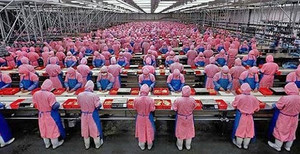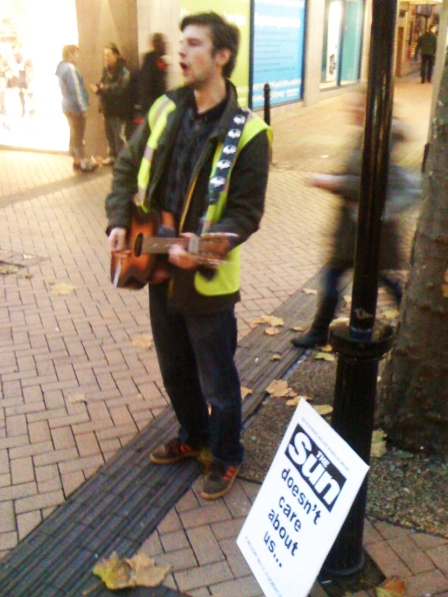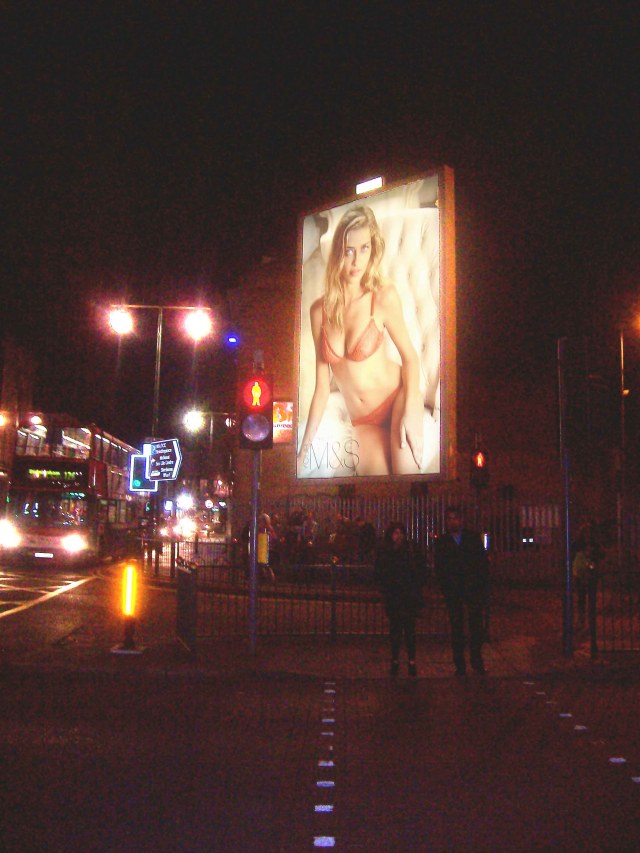
Woody Guthrie, the folk singer of 1930s-50s migratory America, travelling homeless for years over the huge country, stowed away on freight trains and boxcars, singing for small change to the masses of poor people who were hoping to find work and a life somewhere. I bought his autobiography Bound for Glory looking for a vision that the ABH might relate to, of an artist giving his work to grass roots people for their liberation and empowerment. The book really only gets to all that in the last third, but it did get there.
The nature of his approach is very ABH-ish in the following respects: his music is simple enough to play anywhere. He just needs his guitar. He didn’t need a venue or a mic or what-have-you (although he often played in bars for the change he was living on). His songs responded to his moment of history. To work, poverty, exploitation, drink, prostitution, injustice, mortality, TB, racism, ships and trains, beauty, war, the love of his people, and the love of a beautiful land. His songs distinguished between sheep and shepherds, oppressor and oppressed, the many and the few. His songs critiqued injustice and oppression. His songs incited social and spiritual dialogue among grass roots people. He rejected the money and the reputation that came with the rich bars and restaurants, opting instead for solidarity with the poor. The people could join in with his music. His music created situations that unified people in a shared social/spiritual experience.

Maybe the most vivid episode comes after he’s been a travelling homeless musician for some years and he arrives in New York. There he auditions for a steady job in a fancy restaurant high up in the Rockefeller building, but he walks out of the room once the managers start talking about make-up and show tunes and dressing him up like a clown. Down in the lobby he starts playing his songs, dumbfounding everyone there with the spectacle. He then walks out and all over Manhattan till after dark, playing songs and accumulating a crowd of people as he goes. These stories are about the people, about unity, solidarity, community, sharing joy, sharing pain and so on. Scene after scene he brings crowds of people together like this.
.jpg)
It’s a very ABH picture and I think we’ve created our own similar scenes to similar ends. I wanted to spend some time thinking about some of the differences between Woody Guthrie’s migratory America of the 1930’s and our 21st century British scene.
Migratory America is made of masses of very poor people and families moving around and looking for work. A virtually homeless class looking to build a life from scratch. They dreamed of putting roots down. It was sort of a blank canvass… a developing country with only developing infrastructure. It was still young in its cultural story. What would this country become? What would it end up looking like? What kinds of politics and economics would prevail? And it was only just the dawn of mass culture, and music was not yet heavily mediated. If you heard the sound of music, probably someone was sat there playing it. To hear it on the radio was a novelty.
21st Century Britain is made up largely of a homogenous mass of private individuals and families, each in their own private space, working essentially to maintain their position in the consumerist programme. This is a developed country that has become all that it will ever be (or, that the feeling anyway), and has found itself in a kind of spiritual crisis – utterly disillusioned with all it has managed to become. It is in the thick of the process of mediating life in its entirety, a process which has cheapened the value of music along with everything else by making it commonplace and unreal.
So while Guthrie’s Americans were a people being formed, we are a people being dismantled. While their American story was young, unwritten and full of possibilities, ours is old, exhausted and heavy with boredom. While the popular music of migratory America came largely from the voices and hands of ordinary people, our popular music has been absorbed into mediums and commodified. The ordinary people only imitate the music that the powerful mediate to them.
What do these distinctions mean for ABH practice?
Firstly, the deconstruction of our peoplehood only calls all the louder for public music in public space for public ears and public participation. The difference is that, for us, it is a subversive act, which I don’t think it was for Guthrie so much. For them it was a step towards something. For us it is a radical about turn, a non-compliance with the general direction of things.
Secondly, and similarly, the absorption of popular music into the hands of the powerful, who hold the keys to mass culture, only reinforces the need for local, live, grass-roots manifestations of art, without technological mediums between giver and receiver, and without a third party of beneficiaries, labels, advertisers and sponsors and such hovering around the edges, diluting total public ownership. Guthrie was not an artist being marketed to the people, he was one of the people and the sincerity and power of that connection was possible because of the general absence of mediums or third parties. Again, the difference is that for us it is an act of subversion to work outside the structures that have become ubiquitous – that claim to be a totality with no possibility of life outside or beyond itself.
The third consideration seems most layered and poignant to me right now. That is, the difference between being at the beginning or the end of a historical narrative… the rise of a nation, or the fall of one. It follows that Guthrie’s songs may be loaded with a certain steadfast hope about where they might be headed as a people, whereas ours are necessarily loaded with lament about where we’ve got to. What kind of hope do we project into a time like this? That is, towards which new possibilities do we energise each other? Lament for its own sake is of no interest to us.
In 2004 I asked a lot of Christians whether they thought that we as a people could change or be changed for the better. The answer was ‘no’ every time. Human history had to be seen as a downward spiral, and ours looked like the sorriest case. But my conviction was that we had to contend for liberation through repentance, and that it had to be possible. Maybe the people would never accept the subversive dare to, against the empire’s wishes, turn around and stare in the face of God, but they could. It has to be a genuine possibility, and not just a joke. My conviction was that a person has to contend for this possibility, or be a liar when he prays May Your Kingdom come, on earth as it is in heaven…
The hope is in God’s very odd response to repentance. What kind of power does this nearly unutterable incantation release? What new and unforeseen possibilities? The empire denies and forbids the recognition of any power greater than itself, but if we were to rebel and give our attention to such a power, what would we find? A power like the empire, only more so? Or different in kind, releasing a whole other lot of possibilities? It will surprise us every time, even if we thought we already understood it. It is not a purely historical hope, but it not a purely super-historical hope either. As the prayer above suggests it has to be absolutely both.
We should consider the subject further soon.












